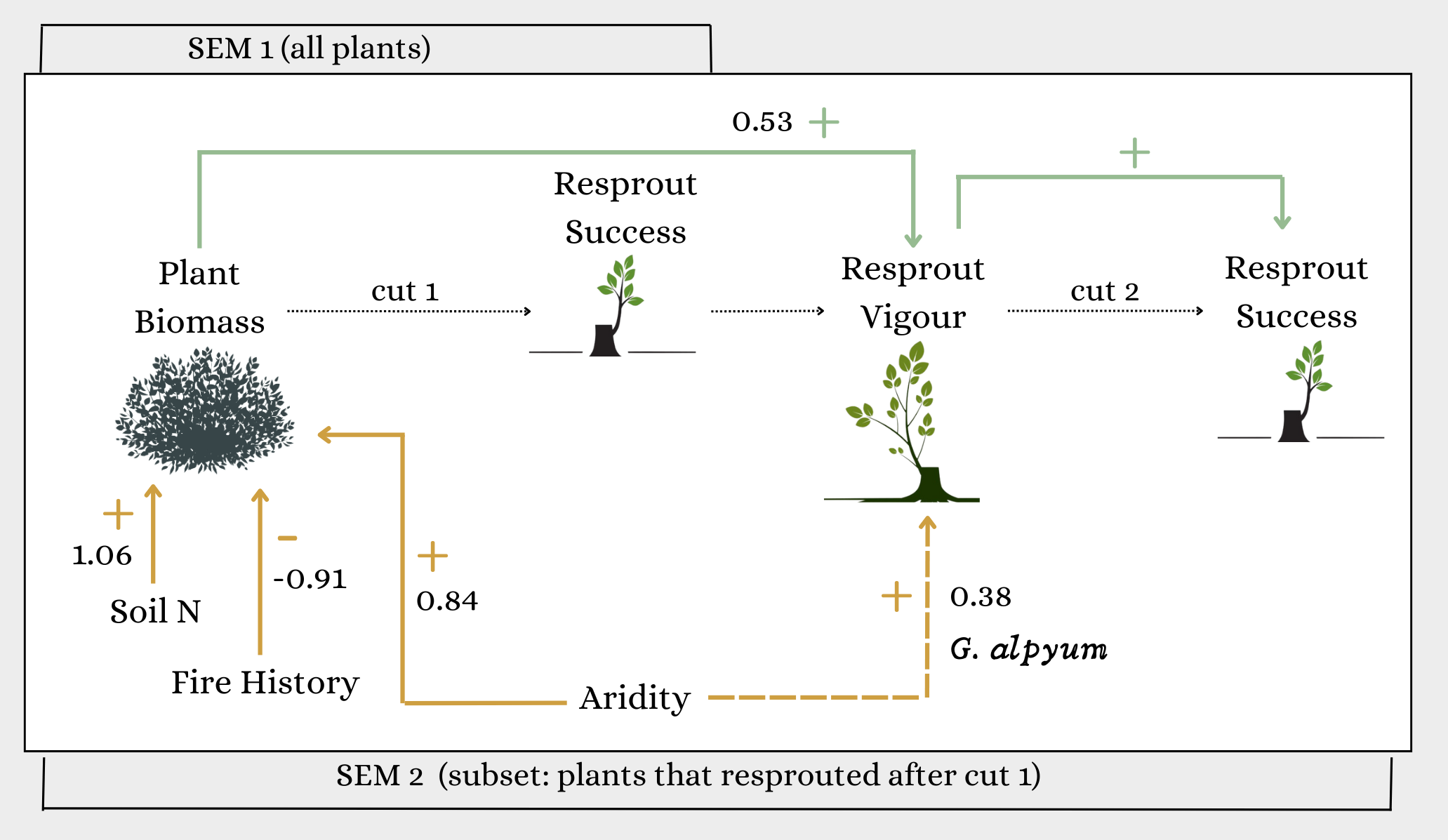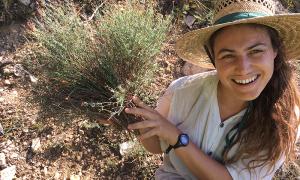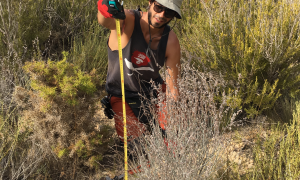
DSE Postdoc Maya Zomer Uncovers New Insights into Mediterranean Shrub Resilience
Maya Zomer, a postdoctoral researcher on our team, is the lead author of a new paper in Journal of Experimental Botany exploring how Mediterranean shrubs recover after disturbance and their resilience to global change. Maya’s research was completed as part of her dissertation at the Desertification Research Center (CIDE-CSIC) in Valencia, Spain.
Many Mediterranean shrub species are well-known for their ability to survive fires and other disturbances by resprouting from protected buds in their roots. Maya’s research highlights that, while this strategy is well-documented at the species level, individual plants’ success in resprouting is far more complex. Her study disentangled multiple potential drivers of resprouting success, including water availability, fire history, soil nutrients, and pre-disturbance plant condition.
Her work focuses on two shrub species widely distributed in the Mediterranean basin: Anthyllis cytisoides and Globularia alypum. Maya’s project combined fieldwork across a 400 km (nearly 250 miles!) climatic gradient with a controlled common-garden experiment. This dual approach was essential for disentangling genetic and environmental effects. Over six years, she and her team applied repeated disturbances and monitored resprouting responses (always during the hottest part of summer) in nearly 400 wild plants and 60 garden plants.
Key findings:
- Resprouting success depends primarily on individual plant history. Larger shrubs with more developed roots and reserves resprout more vigorously. This variability in size is likely a reflection of differences in plant age and its micro-environment. Young plants, which lack substantial root systems and reserves, were particularly vulnerable when attempting to resprout if water is scarce
- Environmental variables played a secondary role. In the field, plants at drier sites invested more belowground and resprouted more strongly. Repeated disturbances and frequent historical fires reduced resprouting ability
- There was no evidence of genetic differences. Resprouting capacity was shaped mainly by individual plant history and, to a lesser degree, environmental legacies

“I hope these insights will significantly contribute to a better understanding of Mediterranean shrubland resilience in a drier and more disturbance-prone future,” said Maya. “Ultimately, this work aims to inform future research and support effective conservation and management strategies for fire-prone landscapes worldwide.”
For further reading and commentary on this work, check out this article.





